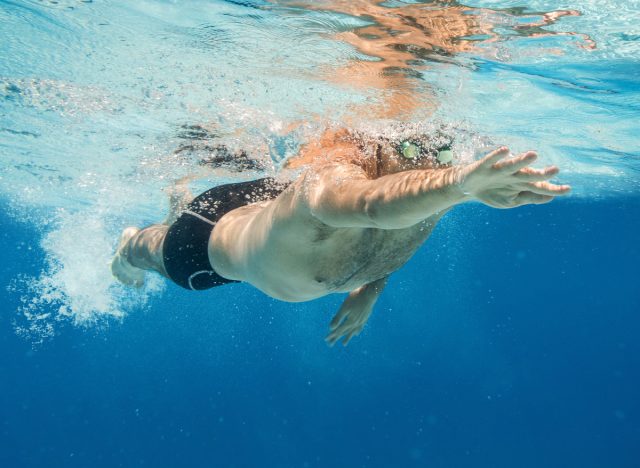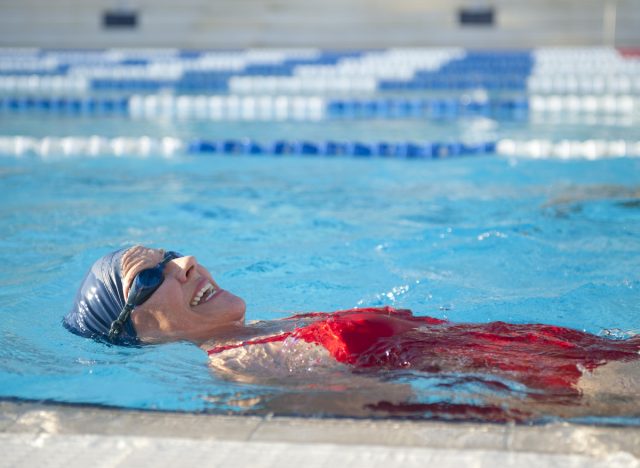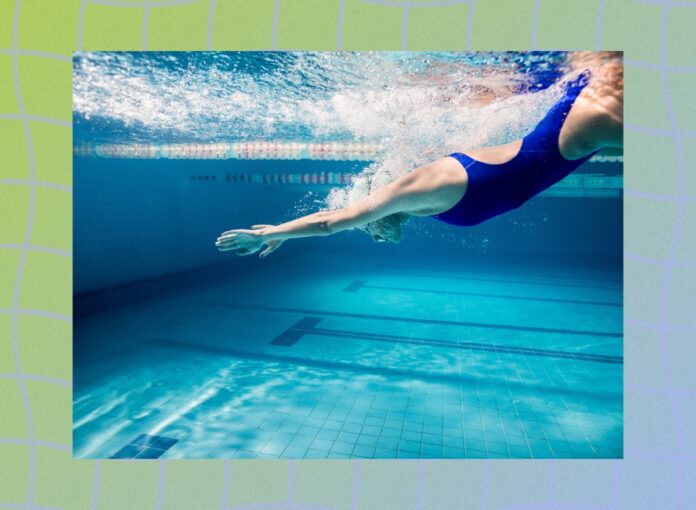Swimming is a workout like no other. Imagine burning calories, defining your muscles, and improving your cardiovascular health. It’s a dream come true for those who love a versatile and fun way to stay fit. And the best part? Swimming is suitable for all ages and fitness levels, making it an inclusive and enjoyable exercise for everyone. The low-impact nature of swimming means it’s gentle on your joints, reducing the risk of injury and making it a safe choice for people with arthritis or other joint issues.
What makes swimming so effective for weight loss is the resistance of the water. Every stroke, kick, and movement you make is met with resistance, which means your muscles stay working hard. This increased effort translates to a higher calorie burn, helping you shed those extra pounds more efficiently. The buoyancy of the water supports your body, reducing the stress on your bones and joints. This unique combination of resistance and buoyancy makes swimming a powerful and safe workout option for weight loss.
An effective workout routine includes more than just splashing around in the pool. A proper swim session should start with a warm-up to prepare your muscles and end with a cool-down to aid recovery. The main set of your workout can vary in intensity, combining different strokes, speeds, and rest intervals to keep things interesting. Consistency is key, so finding a routine you can stick to is crucial. And remember to mix in some dryland exercises to complement your swimming and target different muscle groups.
Now that you’re all pumped up to start swimming, what’s next? I’m here to dive deep into the benefits of swimming for those looking to lose weight, offer guidance on how often you should swim for weight loss, and walk you through a sample swimming workout designed to help you crush your weight-loss goals.
Grab your goggles, take a deep breath, and dive in—this article is about making waves in your fitness routine!
Benefits of Swimming for Weight Loss

Swimming is like a magic potion for weight loss. It combines cardio, strength training, and endurance all in one workout, making it a triple threat for burning calories. When you swim, your whole body is in motion, which means you’re engaging multiple muscle groups simultaneously. This full-body workout helps to torch calories faster than many other forms of exercise. Plus, the resistance of the water adds an extra challenge, boosting your strength and muscle tone without putting stress on your joints. So, whether you’re doing freestyle, breaststroke, or even just treading water, you’re in for a calorie-burning, muscle-toning treat.
The benefits don’t stop there. Swimming is incredibly versatile and can be tailored to any fitness level. It’s a low-impact exercise, perfect for those with joint issues or injuries. It’s a great way to beat the heat and stay cool while working out. And let’s not forget the mental benefits—gliding through the water can be incredibly relaxing and help reduce stress. So, not only will you be shedding pounds, but you’ll also be improving your overall well-being.
How Often You Should Swim for Weight Loss


Consistency is key when it comes to weight loss, and swimming is no exception. Aim to swim at least three to four times weekly to see noticeable results. Each session should be about 30 to 60 minutes long, depending on your fitness level and schedule.
If you’re new to swimming, start with shorter sessions and gradually increase the duration as your stamina improves. The goal is to build a routine you can stick to without feeling overwhelmed.
Mixing up your workouts helps keep things exciting and prevents plateaus. Try incorporating different strokes, intervals, and pool-friendly exercises like water aerobics or resistance training. This variety keeps your muscles guessing and makes your workouts more enjoyable. Remember, the best workout is one that you enjoy and can consistently stick with.
In addition to your regular swimming sessions, consider adding some dryland exercises to your routine. Strength training, stretching, and even yoga can complement your swimming workouts and help you achieve your weight-loss goals faster.
A Sample Swimming Workout for Weight Loss


This workout is great for hitting the pool and crushing your weight-loss goals. It’s designed to maximize calorie burn, build endurance, and keep you engaged with a variety of exercises. This workout combines different swimming strokes with high-intensity intervals and active recovery periods, ensuring you get a comprehensive and effective session every time you hit the pool. Plus, it’s adaptable for different fitness levels and swimming experiences, making it accessible for everyone.
How to Do the Workout:
Warm-up: Start with a five-minute warm-up, swimming at an easy pace. Mix in different strokes, such as freestyle, backstroke, and breaststroke, to get your muscles ready.
Main Set:
- 4 x 50 meters freestyle at a moderate pace, with 20 seconds rest between each set
- 4 x 50 meters breaststroke, with 20 seconds rest between each set
- 4 x 25 meters high-intensity sprints (choose your favorite stroke), with 30 seconds rest between each sprint
- 200 meters easy swim (cool down), focusing on smooth, controlled movements
Cool-down: End with a five-minute cool-down, swimming at a leisurely pace and incorporating gentle stretches.
Modifications:
- Beginners: Reduce the number of sets and increase the rest periods. Focus on maintaining good form rather than speed.
- Intermediate: Follow the workout as outlined, but adjust the intensity based on your comfort level.
- Advanced: Increase the distance of each set (e.g., 100 meters instead of 50) and decrease the rest periods to challenge your endurance and speed.
Jarrod Nobbe, MA, CSCS


